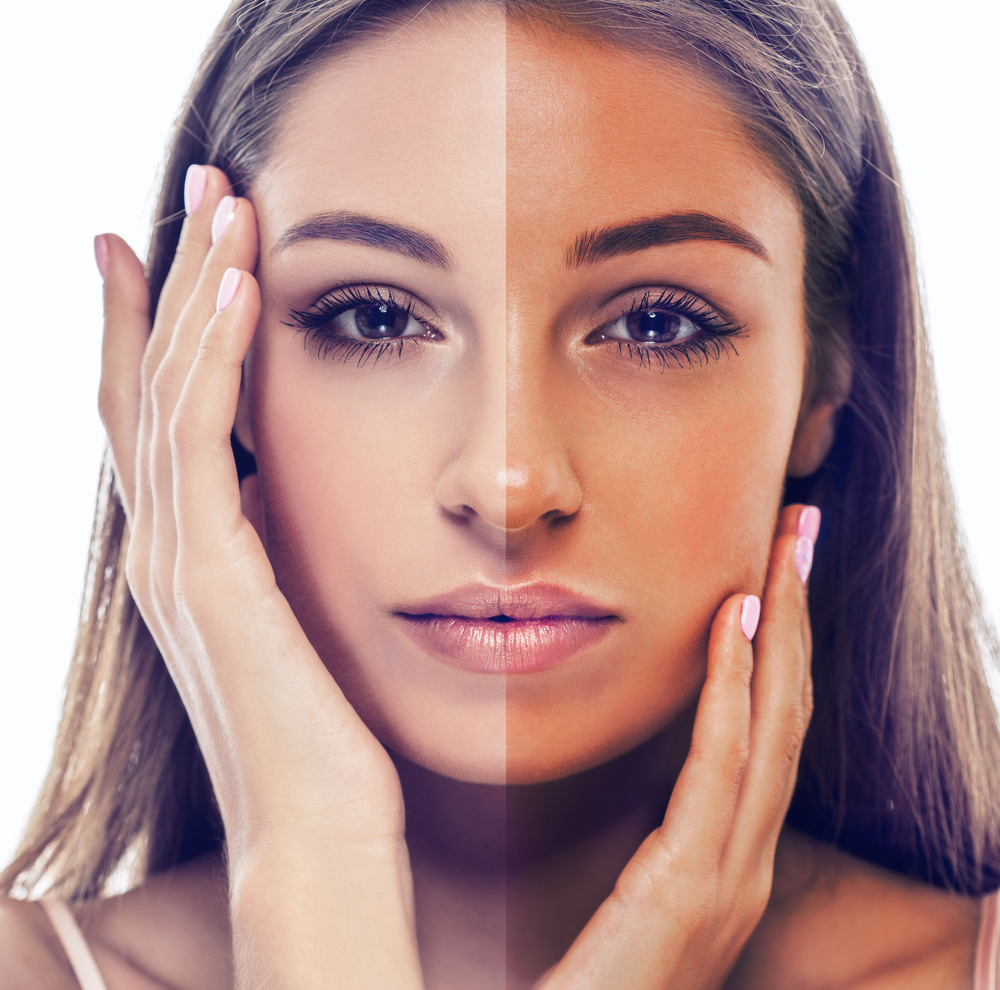Written by Lauren Turville
Airbrush tanning is a process of applying liquid solutions to the body that imitate a natural tan and act as an alternative to sun tanning. When the substance, which comes in the form of spray, cream, gel or lotion, is applied to the skin, it reacts with dead cells in the outermost layer of skin to temporarily darken the skin’s appearance. The coloring does not wash off, but gradually fades as the dead skin cells slough off within a few days (Mayo Clinic, 2012). It is thought by many to be a safer and healthier option than conventional sun tanning to obtain tanner skin. However, there are also risks involved that are frequently overlooked.
The main benefit of airbrush tanning is the absence of ultraviolet rays. Exposure to these types of rays increases the risk of squamous cell, basal cell, and melanoma skin cancers, as well as alters immune responses. Other perks of airbrush tanning include a more even and immediate tan without the typical skin peeling associated with traditional tanning. Thus far, there is little observed evidence of harm to users of the airbrush method, however recent studies have shown there may be negative side effects that are not yet well documented (Pagoto, 2010).
The active chemical used in sunless tanning is dihydroxyacetone (DHA), and is thought by many to have the potential to cause genetic alterations. Dr. Rey Panettieri, a toxicologist and lung specialist at the University of Pennsylvania’s School of Medicine stated, “The reason I’m concerned is the deposition of the tanning agents into the lungs could really facilitate or aid systemic absorption—that is, getting into the bloodstream.” Parallel to this worry, sunless tanners are advised to close their eyes and hold their breath to prevent harmful eye contact and inhalation of the product (Fu, Dusza, Halpern, 2004). Besides the internal effects, studies demonstrate that it is possible for the substance to block the absorption of UVB rays, which are crucial in the creation of the anti-cancer Vitamin D. The same study also showed that prior to using the product, it takes multiple days for the skin to repair and to restart vitamin D creation (Cain, 2010).
Some studies explored the possible risks of musculo-skeletal and respiratory health for the beauty therapists in three different salons that deliver spray-tanning treatments. The analysis of these studies showed a medium risk level of developing MSDs (Health and Safety Laboratory, 2009). The same scientists conducting the experiments above suggested more research should be done, including a study to investigate the prevalence of work-related aches, pains, or discomfort. Additionally, a study to investigate the work environment, and frequency with which beauty therapists carry out other treatments was also recommended. While over thirty states regulate indoor tanning, sunless tanning is widely accepted with very limited guidelines. The FDA approves airbrush tanning, but they suggest the above-mentioned precautions be taken to disallow products from entering eyes, ears, and mouth.
While there are no absolute and proven hazards that come with sunless airbrush tanning, there are a number of risks that must be considered before undergoing such a process. These risks are mostly speculative and have yet to be entirely proven.
